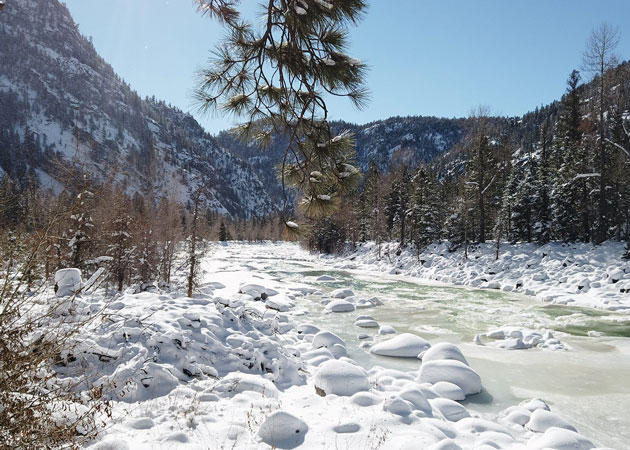Is 10 Acres Considered a Ranch? Debunking Common Misconceptions
1. Introduction
Ranching, with its iconic imagery of wide-open spaces, cowboys herding cattle, and sprawling homesteads, has long been romanticized as a quintessential part of the American frontier. The term “ranch” conjures images of vast expanses of land, where the rugged individualism of the West meets the practicalities of agricultural life. However, as with many facets of rural life, the reality of what constitutes a ranch is far more complex and nuanced than popular perception might suggest.
In recent decades, there has been a shift in the understanding and classification of ranches, particularly concerning their size. Traditionally, ranches were synonymous with large-scale operations spanning thousands or even hundreds of thousands of acres, primarily focused on livestock grazing and production. These mammoth ranches, often associated with states like Texas, Wyoming, and Montana, represented a way of life deeply rooted in the history and culture of the American West.
However, as societal norms evolve, fragmentation occurs of our lands, so too do the definitions and boundaries of ranching. Today, the term “ranch” encompasses a spectrum of properties, ranging from expansive ranch estates to more modestly sized operations. This evolution has sparked discussions and debates, leading to questions such as whether 10 acres can rightfully be considered a ranch.
This article delves into this intriguing question, aiming to unravel common misconceptions, explore the historical context of ranching, analyze modern definitions, and assess the factors that influence ranch size classifications. By examining case studies, providing examples, and presenting data-driven insights, we aim to provide a comprehensive and balanced view of the topic. Whether you’re a landowner, agricultural enthusiast, or simply curious about the intricacies of rural life, this article invites you to explore the fascinating world of ranching and the role of 10-acre properties within it.
2. What Constitutes a Ranch?
The concept of a ranch carries a rich historical legacy intertwined with the development of agriculture, land management, and the cultural identity of regions like the American West. Understanding what constitutes a ranch requires delving into its historical roots, the evolution of ranching practices, and the modern definitions that shape our perception of these properties.
A. Historical Background of Ranching.
Ranching can be traced back to ancient pastoral societies where nomadic herders roamed vast grasslands with their livestock, relying on seasonal grazing patterns and migratory routes. This nomadic lifestyle evolved over centuries, eventually leading to settled agricultural communities and the establishment of large-scale pastoral estates.
In the context of the Americas, ranching gained prominence during the Spanish colonization period. Spanish settlers brought with them cattle, horses, and sheep, introducing European livestock management practices to the New World. The expansive territories of the American West provided ideal conditions for cattle ranching, leading to the rise of iconic cattle ranches that became synonymous with the frontier spirit and cowboy culture.
Over time, ranching expanded beyond livestock to include other agricultural activities such as crop cultivation, timber production, and wildlife management. The management of natural resources on ranch lands became integral to sustainable land stewardship and biodiversity conservation.
B. Traditional and Modern Definitions of a Ranch
Traditionally, a ranch referred to a large tract of land primarily used for livestock grazing and management. These properties often spanned thousands or even hundreds of thousands of acres, encompassing diverse ecosystems, water resources, and grazing pastures. The scale of operations on traditional ranches allowed for extensive cattle herds, rotational grazing systems, and infrastructure such as corrals, barns, and water wells.
In modern times, the definition of a ranch has expanded to encompass a broader range of properties based on their function, management practices, and economic activities. While large-scale ranches still exist, smaller properties with diverse land uses are also classified as ranches. This shift reflects changes in land ownership patterns, agricultural practices, and societal values related to land use and conservation.
C. Factors Influencing Ranch Size Classifications
The classification of a property as a ranch is influenced by several factors, including:
1. Geographic Location: The geographical context plays a crucial role in defining ranch sizes. Regions with extensive grasslands, favorable climates for livestock, and access to water resources are conducive to larger ranching operations. However, ranches can also thrive in diverse environments, including mountains, deserts, and coastal areas, each presenting unique opportunities and challenges.
2. Purpose of the Ranch: The primary purpose of a ranch determines its size and management practices. Ranches focused on livestock production require more acreage for grazing, while those emphasizing agriculture may allocate land for crops, orchards, or specialty crops like vineyards. Additionally, recreational ranches cater to outdoor activities such as hunting, fishing, and eco-tourism, with land use tailored to support these activities.
3. Economic Considerations: The economic viability of a ranch influences its size and scale. Larger ranches often benefit from economies of scale, allowing for more efficient production, marketing, and profitability. However, smaller ranches can also be economically viable through niche markets, value-added products, and sustainable practices that enhance market appeal and profitability per acre.
4. Legal and Regulatory Framework: Zoning laws, land use regulations, and environmental policies impact ranch size classifications. Local ordinances may specify minimum acreage requirements for agricultural zoning or designate areas for conservation, influencing the size and scope of ranching activities permitted in different zones.
5. Fragmentation Land: Due to population growth, the demand for land, and other factors, the price per acre for land overall has increased dramatically since the 1800’s. Due to this demand year over year fragmentation has increased in the United States. For example, per Yahoo news we are losing 1.8 million acres per year on average due to urbanization (Cities and towns expanding into rural areas). According to Farmland Information Center we are losing more than 2,000 acres of farm land a day.
By considering these factors holistically, it becomes evident that ranch size classifications are dynamic and context-dependent, reflecting the diverse landscapes, economic activities, and cultural traditions associated with ranching across different regions.
3. Understanding Acreage Measurements
A. Definition of an Acre and a Section
An acre is a unit of land measurement that has historical roots dating back centuries. The term “acre” is derived from the Old English word “æcer,” which meant a field of land. The concept of an acre evolved over time and varied in size depending on cultural and geographical contexts.
In the United States, an acre is officially defined as 43,560 square feet, which is equivalent to approximately 4,047 square meters. This standardized measurement is crucial for land transactions, property assessments, and agricultural planning. However, it’s essential to note that acreage measurements can vary in different countries and regions. For instance, in some parts of Europe, an acre may be slightly larger or smaller than the U.S. acre due to historical measurement systems.
A section is simple 640 acres, or one square mile. Many ranches are divided and measured by sections especially in the Western United States.

B. Variations in Acreage Measurements Across Regions
The variation in acreage measurements stems from historical and cultural differences in land use and measurement practices. In some regions, traditional units of land measurement were based on local customs, agricultural practices, or historical land divisions.
For example, in the United Kingdom, the traditional acre was based on the area of land that a team of eight oxen could plow in a day. This measurement differed slightly from the U.S. acre, leading to variations in land sizes when comparing properties across the Atlantic.
Similarly, countries in continental Europe often used their own units of land measurement, such as hectares, arpents, or “morgen,” which could vary in size compared to the acre. These variations highlight the importance of understanding local measurement systems when dealing with land transactions or assessing property sizes.
C. Importance of Accurate Measurements in Determining Ranch Size
Accurate acreage measurements are critical in determining the size and boundaries of ranch properties. For ranchers, landowners, and agricultural professionals, knowing the exact acreage of a property is essential for several reasons:
1. Land Use Planning: Ranchers need precise measurements to plan grazing areas, crop rotations, and infrastructure development on their properties. Accurate acreage data ensures efficient land utilization and optimal resource management.
2. Property Valuation: Acreage measurements play a significant role in property valuation and appraisal. The size of a ranch directly impacts its market value, tax assessments, and potential for financing or investment.
3. Regulatory Compliance: Many jurisdictions have zoning regulations, land use ordinances, and environmental guidelines that apply based on property size. Ranchers must comply with these regulations, which often require accurate acreage measurements for legal purposes.
4. Resource Allocation: Efficient allocation of resources such as water, fencing materials, and labor depends on knowing the exact size of the ranch. Overestimating or underestimating acreage can lead to inefficiencies and increased costs.
5. Land Management Practices: Precision agriculture and land management practices rely on accurate spatial data, including acreage measurements. Technologies such as GPS mapping, drones, and geographic information systems (GIS) facilitate precise mapping and analysis of ranch properties.
In summary, understanding acreage measurements is fundamental to ranching and land management. Accurate measurements ensure optimal land use, regulatory compliance, property valuation, and resource allocation, contributing to the sustainability and productivity of ranching operations.
4. Is 10 Acres Considered a Ranch?
The concept of ranching has evolved significantly over time, leading to debates and discussions about what size of land can be classified as a ranch. Traditionally, ranches were vast expanses of land, often spanning thousands of acres, used primarily for livestock grazing and production. This traditional image of a ranch, popularized by Western movies and literature, has shaped public perceptions of ranching as synonymous with large-scale operations.
However, as agriculture and land management practices have evolved, so too has the definition of a ranch. Today, the classification of a property as a ranch is influenced by various factors beyond sheer acreage. While size remains an important consideration, the functionality, management practices, and economic viability of the property play significant roles in determining whether it qualifies as a ranch.
When considering whether 10 acres can be considered a ranch, it’s crucial to look beyond the raw acreage and delve into the purpose and management of the property. While 10 acres may seem small compared to the sprawling ranches of the past, it can still fulfill the functions of a ranch under certain conditions.
Factors to Consider:
1. Purpose of the Ranch: The intended purpose of the property plays a crucial role in its classification as a ranch. Traditional ranches focused on livestock production, such as cattle, sheep, or horses. However, modern ranches may also include agricultural activities, recreational amenities, or conservation efforts. A 10-acre property can be designated as a ranch if it serves one or more of these purposes effectively.
2. Management Practices: The way in which the property is managed influences its classification as a ranch. Effective land management, sustainable practices, and efficient resource utilization are essential aspects of ranching, regardless of the property’s size. A well-managed 10-acre property that employs sound agricultural or livestock management practices can indeed be considered a ranch.
3. Economic Viability: Economic sustainability is a critical factor in determining whether a property qualifies as a ranch. While larger ranches may have economies of scale working in their favor, smaller properties can achieve profitability through niche markets, value-added products, and diversified income streams. A 10-acre ranch that demonstrates economic viability and contributes to the owner’s livelihood can be classified as a ranch.
Table 1: Examples of 10-Acre Ranches
Type of Ranch | Description |
A property with grazing land for a limited number of cattle or horses. The focus is on sustainable grazing practices and animal welfare. | |
Combines elements of agriculture and recreation, with small-scale livestock, poultry, or crop production. Often includes a residential component. | |
Primarily used for leisure activities such as hunting, fishing, and outdoor recreation. May have limited agricultural or livestock components. |
In many cases, 10-acre ranches fall into categories such as hobby farms or recreational ranches. Hobby farms allow individuals or families to engage in agricultural activities on a smaller scale, often for personal enjoyment or supplemental income. Recreational ranches cater to outdoor enthusiasts and may feature amenities like cabins, trails, and wildlife habitats.
Economic Considerations:
One of the primary concerns when discussing the classification of 10 acres as a ranch is the economic feasibility of such operations. Larger ranches may benefit from economies of scale, lower production costs per unit, and access to broader markets. In contrast, smaller ranches face challenges related to scalability, production efficiency, and market access.
However, advancements in agricultural technology, marketing strategies, and value-added products have enabled smaller ranches to thrive in today’s market. Many 10-acre ranches focus on niche markets, specialty products, and direct-to-consumer sales, leveraging their unique offerings to attract customers and generate revenue. Additionally, sustainable practices and conservation efforts can enhance the appeal of smaller ranches to environmentally conscious consumers.
5. Factors Influencing Ranch Size Classifications
Several factors influence whether a property of 10 acres can be officially classified as a ranch. These factors go beyond acreage and delve into the practical aspects of land use, economic viability, and regulatory considerations.
1. Livestock Capacity and Grazing Requirements: A key factor in ranch classification is the property’s ability to support livestock. While 10 acres may not sustain a large herd of cattle, it could accommodate a few horses, goats, or other animals depending on local regulations and land conditions.
2. Agricultural Production Capabilities: The agricultural potential of a 10-acre ranch depends on factors such as soil quality, water availability, and climate. Small-scale crop cultivation, orchards, or specialty farming (e.g., organic produce) are viable options for diversifying the ranch’s income streams.
3. Land Use Regulations and Zoning Laws: Zoning ordinances and land use regulations vary by location and can impact the classification of a property as a ranch. Some areas have specific requirements for minimum acreage for agricultural or ranching purposes.
4. Sustainability and Environmental Considerations: Sustainable ranching practices are increasingly important in modern agriculture. A 10-acre ranch can demonstrate sustainability through water conservation, soil health management, and biodiversity conservation efforts.
6. Case Studies and Examples
To illustrate the diversity of 10-acre ranches and their roles in modern agriculture and land management, let’s explore some case studies and examples.
1. Small-Scale Livestock Operation: John and Sarah Smith own a 10-acre property in rural Oregon. They raise a small herd of grass-fed beef cattle using rotational grazing techniques. The ranch is managed with a focus on regenerative agriculture practices, improving soil health, and promoting biodiversity.
2. Hobby Farm with Diversified Income Streams: The Johnson family’s 10-acre ranch in California includes a vineyard, fruit orchard, and vegetable garden. They also raise chickens for eggs and have a small apiary for honey production. The farm hosts agritourism events, such as farm-to-table dinners and educational workshops, generating additional revenue.
3. Recreational Ranch for Outdoor Enthusiasts: Mark owns a 10-acre ranch in Colorado, primarily used for hunting and wildlife conservation. The property features a rustic cabin for guests, hiking trails, and managed habitat areas for deer and elk. Mark works closely with local conservation organizations to preserve the natural environment while offering recreational opportunities.
7. Pros and Cons of 10-Acre Ranches
While 10-acre ranches offer various benefits, they also come with challenges and considerations that potential owners should be aware of.
Advantages:
1. Lower Initial Investment: Compared to larger ranches, purchasing a 10-acre property typically requires a lower upfront investment, making it accessible to a broader range of buyers.
2. Easier Management and Maintenance: Smaller acreage means less intensive management, making it suitable for individuals or families with limited experience in ranching or farming.
3. Diversification Opportunities: 10-acre ranches can diversify income streams through activities like agritourism, value-added products, and niche markets.
Disadvantages:
1. Limited Scalability: The size constraints of a 10-acre ranch limit scalability and may hinder expansion opportunities, especially for livestock production.
2. Zoning and Regulatory Restrictions: Local regulations regarding land use, zoning, and agricultural practices can impact what activities are allowed on a 10-acre property.
3. Economic Sustainability Challenges: Achieving economic sustainability on a smaller ranch requires careful planning, efficient resource utilization, and market awareness.
4. Cost per Acre: The smaller the parcel of land, typically the higher the cost per acre. Bulk purchasing or mass buying will cause a wholesale price (or lower price) on a per acre basis. Due to fragmentation although, parcels of land are becoming smaller and smaller by year.
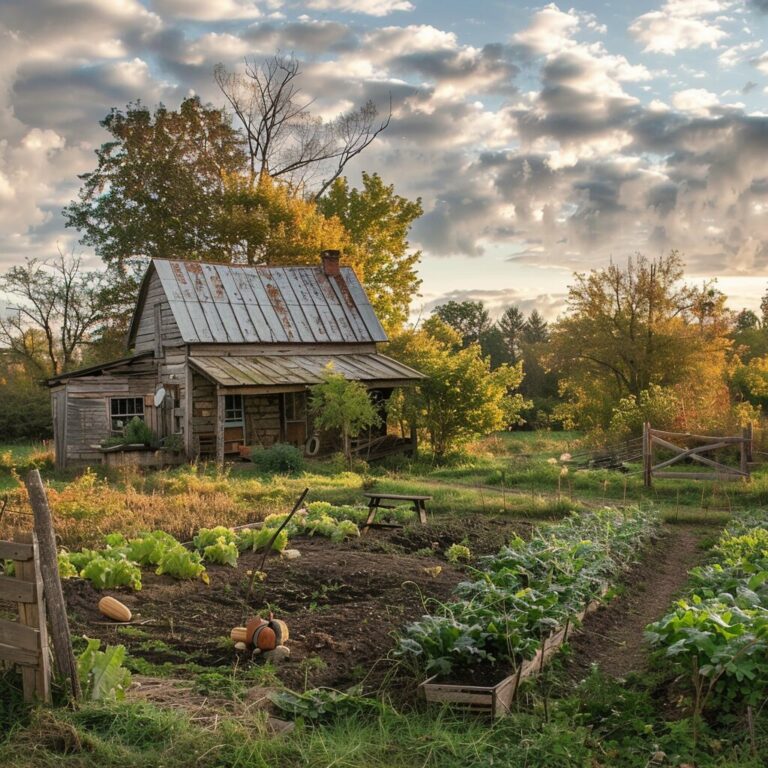
8. The Future of Small-Scale Ranching
The future of small-scale ranching is poised for significant growth and innovation, driven by shifting consumer preferences, population growth, fragmentation, technological advancements, and sustainability imperatives. As we look ahead, several key trends and developments are shaping the landscape of small-scale ranching and influencing the opportunities and challenges faced by ranch owners.
1. Consumer Demand for Local, Sustainable Products, Independence
One of the driving forces behind the rise of small-scale ranching is the increasing demand for locally sourced, sustainably produced food products. Consumers are becoming more conscious of the environmental and ethical implications of their food choices, leading to a growing preference for products that are raised or grown with minimal environmental impact. Small-scale ranches, with their focus on sustainable practices such as rotational grazing, regenerative agriculture, and animal welfare, are well-positioned to meet this demand. In addition there is an increase in desire by many consumers to be independent or self-sufficient (Homesteading).
2. Technological Advancements in Agriculture
Advancements in agricultural technology are transforming the way small-scale ranches operate. Precision agriculture tools, such as GPS-guided equipment, drones, and soil sensors, allow ranchers to optimize resource use, monitor livestock health, and improve productivity. Automated feeding systems, remote monitoring cameras, and smart irrigation systems are becoming increasingly accessible to small-scale ranchers, enabling efficient management and reducing operational costs.
3. Diversification and Value-Added Products
Small-scale ranchers are exploring diversification opportunities and value-added products to enhance their economic sustainability. Beyond traditional livestock production, ranches may venture into niche markets such as organic meats, specialty cheeses, artisanal soaps (made from animal byproducts), or agritourism experiences like farm stays, educational workshops, and farm-to-table events. These value-added products and experiences not only generate additional revenue but also strengthen connections with consumers and build brand loyalty.
4. Regenerative Agriculture Practices
Regenerative agriculture is gaining prominence as a holistic approach to farming and ranching that focuses on soil health, biodiversity, and ecosystem resilience. Small-scale ranches are embracing regenerative practices such as rotational grazing, cover cropping, and holistic land management to restore degraded landscapes, sequester carbon, and improve water retention. These practices not only benefit the environment but also enhance the long-term productivity and profitability of ranch operations.
5. Collaboration and Community Engagement
Small-scale ranching often thrives through collaboration and community engagement. Ranchers may form cooperatives or partnerships to access shared resources, marketing channels, and distribution networks. Community-supported agriculture (CSA) models, where consumers subscribe to receive regular deliveries of farm-fresh products, offer a direct connection between ranchers and local communities. By fostering strong ties with consumers, neighboring farms, and supportive organizations, small-scale ranches can build resilience and create mutual benefits.
6. Policy and Financial Support
Government policies and financial incentives play a crucial role in supporting the growth of small-scale ranching. Programs that promote sustainable agriculture practices, provide access to affordable land and equipment, offer training and technical assistance, and incentivize conservation efforts can empower ranchers to succeed. Funding opportunities for renewable energy projects, water conservation initiatives, and value-added product development further contribute to the economic viability and resilience of small-scale ranching enterprises.
7. Education and Skill Development
Aspiring and existing ranchers benefit from education and skill development programs tailored to small-scale operations. Training in livestock management, pasture rotation, business planning, marketing strategies, and environmental stewardship equips ranchers with the knowledge and tools needed to thrive in a competitive market. Extension services, agricultural universities, and industry associations play vital roles in providing education, research support, and networking opportunities for small-scale ranchers.
In conclusion, the future of small-scale ranching is bright, driven by consumer demand for sustainable, locally sourced products, technological innovations, regenerative agriculture practices, collaborative partnerships, supportive policies, and ongoing education. Small-scale ranches not only contribute to food security, environmental conservation, and rural economies but also offer unique experiences and connections that resonate with consumers seeking authenticity, transparency, and community engagement. By embracing innovation, stewardship, and collaboration, small-scale ranching will continue to thrive and evolve in the dynamic agricultural landscape of the future.
9. Conclusion
In conclusion, the classification of 10 acres as a ranch depends on various factors, including land use, management practices, and local regulations. While traditional ranches often encompass vast acreage, smaller properties can fulfill the functions of a ranch, such as livestock production, agriculture, and recreation. Understanding the opportunities and challenges of 10-acre ranches is crucial for aspiring landowners and stakeholders in the agricultural industry. By embracing sustainable practices, leveraging innovation, and adapting to evolving market trends, 10-acre ranches can play a vital role in sustainable food production and rural livelihoods

A Comprehensive Guide to Financing Land
A Comprehensive Guide to Financing Land: Strategies, Considerations, and Steps Introduction Land has always been a symbol of stability, opportunity, and prosperity. From ancestral homesteads
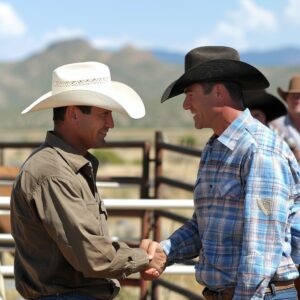
Mastering Land Sales: A Comprehensive Guide to Selling Your Property
Mastering Land Sales: A Comprehensive Guide to Selling Your Property Introduction The process of selling land is often perceived as a complex and challenging endeavor,

Legal Checklist for Ranch Investments
Legal Checklist for Ranch Investments In ranch investments, legal considerations are the bedrock upon which successful transactions and operational endeavors are constructed. Ranching ventures are
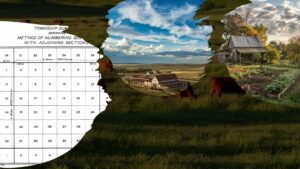
Is 10 Acres Considered a Ranch? Debunking Common Misconceptions
Is 10 Acres Considered a Ranch? Debunking Common Misconceptions 1. Introduction Ranching, with its iconic imagery of wide-open spaces, cowboys herding cattle, and sprawling homesteads,
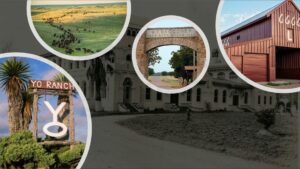
The Top Five Largest Ranches in Texas: A Deep Dive into the Heart of Ranching Heritage
The Top Five Largest Ranches in Texas: A Deep Dive into the Heart of Ranching Heritage Introduction Texas, often hailed as the heart of ranching
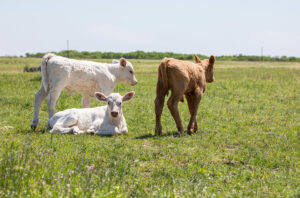
The Intricacies of the 2-Cow Tax Loophole in California: Unveiling the Complexities
The Intricacies of the 2-Cow Tax Loophole in California: Unveiling the Complexities Introduction Taxation is a fundamental aspect of modern society, serving as the

